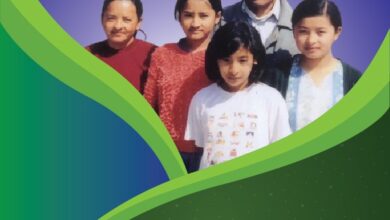“Digital Equity for All Ages” – International Day of Older Persons 2021

October 01-
International Day of Older Persons 2021, themed “Digital Equity for All Ages,” affirms the need for access and meaningful participation in the digital world by older persons.
The fourth industrial revolution characterized by rapid digital innovation and by exponential growth has transformed all sectors of society, including how we live, work and relate to one another. Technological advances offer great hope for accelerating progress towards the Sustainable Development Goals (SDGs). Yet, one-half of the global population is off-line, with the starkest contrast between the most developed countries (87%) and the least developed countries (19%) (ITU Facts and Figures 2020). Recent reports by the International Telecommunications Union (ITU) indicate that women and older persons experience digital inequity to a greater extent than other groups in society; they either lack access to technologies, or are often not benefitting fully from the opportunities provided by technological progress.
Meanwhile, as efforts to connect more people are currently under way, new risks have become apparent. For example, cybercrimes and misinformation threaten the human rights, privacy, and security of older people. The rapid speed of adoption of digital technology has outpaced policy and governance at the national, regional, and global levels. The Secretary-General’s Roadmap seeks to address these challenges by recommending concrete action to harness the best of these technologies and mitigate their risks.
Objectives of #UNIDOP2021:
- To bring awareness of the importance of digital inclusion of older persons, while tackling stereotypes, prejudice and discrimination associated with digitalization, taking into account sociocultural norms and the right to autonomy.
- To highlight policies to leverage digital technologies for full achievement of the sustainable development goals (SDGs).
- To address public and private interests, in the areas of availability, connectivity, design, affordability, capacity building, infrastructure, and innovation.
- To explore the role of policies and legal frameworks to ensure privacy and safety of older persons in the digital world.
- To highlight the need for a legally binding instrument on the rights of older persons and an intersectional person-centered human rights approach for a society for all ages.

Digital Inclusion for All
The digital divide still persists between more and less connected countries, communities, and people. Enabling all the world’s people to access and use digital technologies and closing digital divides remains a challenge that needs to be addressed if the world community is to achieve the United Nations Sustainable Development Goals ( SDGs) by 2030.
Background
On 14 December 1990, the United Nations General Assembly designated October 1 as the International Day of Older Persons (resolution 45/106). This was preceded by initiatives such as the Vienna International Plan of Action on Ageing, which was adopted by the 1982 World Assembly on Ageing and endorsed later that year by the UN General Assembly.
In 1991, the General Assembly adopted the United Nations Principles for Older Persons (resolution 46/91). In 2002, the Second World Assembly on Ageing adopted the Madrid International Plan of Action on Ageing, to respond to the opportunities and challenges of population ageing in the 21st century and to promote the development of a society for all ages.
The composition of the world population has changed dramatically in recent decades. Between 1950 and 2010, life expectancy worldwide rose from 46 to 68 years. Globally, there were 703 million persons aged 65 or over in 2019. The region of Eastern and South-Eastern Asia was home to the largest number of older persons (261 million), followed by Europe and Northern America (over 200 million).
Over the next three decades, the number of older persons worldwide is projected to more than double, reaching more than 1.5 billion persons in 2050. All regions will see an increase in the size of the older population between 2019 and 2050. The largest increase (312 million) is projected to occur in Eastern and South-Eastern Asia, growing from 261 million in 2019 to 573 million in 2050. The fastest increase in the number of older persons is expected in Northern Africa and Western Asia, rising from 29 million in 2019 to 96 million in 2050 (an increase of 226 per cent). The second fastest increase is projected for sub-Saharan Africa, where the population aged 65 or over could grow from 32 million in 2019 to 101 million in 2050 (218 per cent). By contrast, the increase is expected to be relatively small in Australia and New Zealand (84 per cent) and in Europe and Northern America (48%), regions where the population is already significantly older than in other parts of the world.
Among development groups, less developed countries excluding the least developed countries will be home to more than two-thirds of the world’s older population (1.1 billion) in 2050. Yet the fastest increase is projected to take place in the least developed countries, where the number of persons aged 65 or over could rise from 37 million in 2019 to 120 million in 2050 (225%).
Let’s celebrate our Senior Citizens on this occasion!
Courtesy: UN: https://www.un.org/en/observances/older-persons-day

